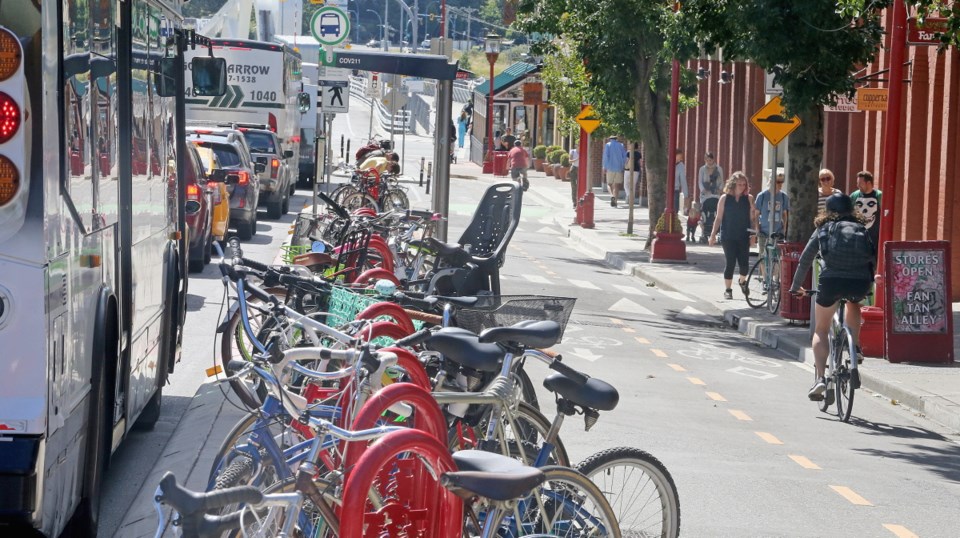Greater Victoria residents are slowly beginning to leave the car at home in favour of walking, cycling or taking the bus.
While about three quarters of daily trips taken by residents are still done in autos — either as a driver or a passenger — there is a slow but steady shift to other modes, according to an origin-destination household travel survey conducted for the Capital Regional District.
Oak Bay Mayor Nils Jensen, who chairs the CRD transportation committee, called the survey results “positive.”
“The issue isn’t about getting rid of cars and forcing people out of their cars. The issue is really about providing the alternatives — providing the choice that people have for transportation options. I think the more we do that, the more people will choose to walk, bike and bus,” Jensen said.
In 2017 about 59 per cent of all daily trips in the region were done by a car and driver. That compared to 62.9 per cent of all trips in 2011 and 64.3 per cent in 2006.
Vehicle passengers accounted for 12.9 per cent of all trips in 2017; 13 per cent in 2011 and 13.5 per cent in 2006.
Walking was the next highest mode of transporation with 13.7 per cent of all trips — an increase from 13.2 per cent in 2011 and 10 per cent in 2006, followed by transit at 7.8 per cent, up from 6.5 per cent in 2011 and 7.0 per cent in 2006.
Possible reasons for the shifts include urban densification, development of transportation infrastructure, demographic shifts, and/or changes in the attitudes and behaviours of residents, say R.A. Malatest and Associates, the consultants who conducted the survey.
“It’s useful for planning purposes,” Jensen said of the survey. “As we see the trend — slowly we’re moving toward more people walking, biking and busing. It’s a trend that’s represented in most major Canadian cities and international cities for that matter,” Jensen said. “So I think it’s very positive.”
Still, residents’ love of the auto remains strong.
The random survey of 7,159 households conducted late September until mid December 2017 found that there are an average of 1.55 vehicles per household — a rate that has remained relatively constant over the course of four surveys conducted since 2001.
It also found that the number of discretionary trips in the region has dropped but that trips are longer.
CRD staff say the results show that progress is being made toward achieving the CRD’s goal of having 42 per cent of all trips taken using active transportation and transit by 2038. Currently it’s at about 27 per cent.
The survey gathered information on household characteristics such as number of persons and vehicles, demographics, locations of schools and workplaces, and trips made by people five years of age and older during a 24-hour period.



